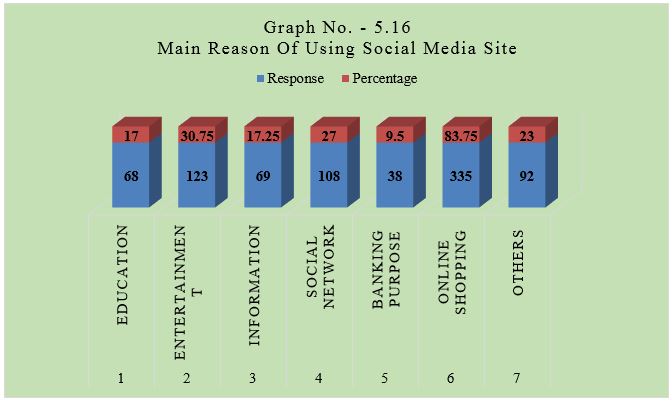Exploring the Motivations for Social Media Use among Tribal Women in North Gujarat: A Sociological Analysis
DOI:
https://doi.org/10.5281/zenodo.16417367Keywords:
north gujarat, tribal women, women empowerment, social media, sociological perspectiveAbstract
In recent years, the reach of digital technology has extended into India’s most remote and socio-economically disadvantaged regions. Among the key demographic groups entering the digital fold are tribal women, whose engagement with platforms like WhatsApp, Facebook, Instagram, and YouTube represents a significant shift in patterns of communication, knowledge access, and identity formation (Gurumurthy & Chami, 2014). However, despite the growing relevance of this trend, scholarly attention to the motivations behind their social media usage remains limited.
Social media, as framed by Castells (2011), is a powerful agent of social change, enabling new forms of networked individualism and collective identity. For tribal women in North Gujarat—historically excluded from mainstream educational and economic systems—the mobile phone and internet offer not only connection but also a sense of visibility and voice (Sundar, 2020). Their motivations for engaging with social media are deeply embedded in their socio-cultural realities, encompassing a desire for inclusion, expression, learning, and economic participation.
From a sociological perspective, the use of social media among tribal women is not merely a digital phenomenon but also a reflection of broader structural shifts in gender roles, rural development, and technological penetration (Jain & Kurane, 2018). Whether as learners, entrepreneurs, homemakers, or activists, tribal women are finding in social media a space for identity negotiation and aspiration formation.
This paper seeks to explore these motivations through a sociological lens, emphasizing how intersecting factors such as caste, tribe, gender, class, and location mediate digital behavior. By focusing on tribal women in North Gujarat, the study contributes to the evolving discourse on technology and society, offering insight into how social media is reshaping lived experiences on the periphery.
Downloads
References
Castells, M. (2011). The rise of the network society: The information age: Economy, society, and culture. Wiley-Blackwell.
Gurumurthy, A., & Chami, N. (2014). Gender equality in the information society. United Nations Research Institute for Social Development (UNRISD).
Jain, M., & Kurane, A. (2018). Digital inclusion in rural India: An exploratory study of gender and access. Media Watch, 9(3), 313–324.
Sundar, P. (2020). Mobile phones and women’s empowerment in rural India: A study of aspirational change. Journal of Rural and Community Development, 15(2), 84–102.
Kumar, Amarjeet. A significance of youth participation in panchayati raj: A case study on Bihar naxal and violent groups affected districts.
Chen, Gina M. (2015). Why do women bloggers use social media? Recreation and information motivations outweigh engagement motivations. New Media & Society, 17(1), 24-40.
Kumar, Amarjeet. (2019). Critical aspects behind women representation in panchayati raj and 108th constitutional amendment (Women’s reservation bill). International Journal for Research in Applied Sciences and Biotechnology, 6(5), 22-25.
Bhatia, Kiran Vinod, & Manisha Pathak-Shelat. (2019). Media experiences in community-driven rural areas: exploring children’s media cultures in rural Gujarat, India. Journal of Children and Media, 13(3), 260-275.
Patel, Viresh. (2017). Parents, permission, and possibility: Young women, college, and imagined futures in Gujarat, India. Geoforum, 80, 39-48.
Sharma, Bharati, et al. (2013). The transition of childbirth practices among tribal women in Gujarat, India-a grounded theory approach. BMC International Health and Human Rights, 13(1), 41.
Singh, Dr Pyar. (2024). Impact of traditional & modern mass media on development communication among gujjar tribe of chamba district in the western Himalayas of Himachal Pradesh. Available at SSRN 5075325.

Published
How to Cite
Issue
Section
ARK
License
Copyright (c) 2025 Dhanula Anjli Dharmendrakumar, Amarjeet Kumar

This work is licensed under a Creative Commons Attribution 4.0 International License.
Research Articles in 'Social Science Journal for Advanced Research' are Open Access articles published under the Creative Commons CC BY License Creative Commons Attribution 4.0 International License http://creativecommons.org/licenses/by/4.0/. This license allows you to share – copy and redistribute the material in any medium or format. Adapt – remix, transform, and build upon the material for any purpose, even commercially.










